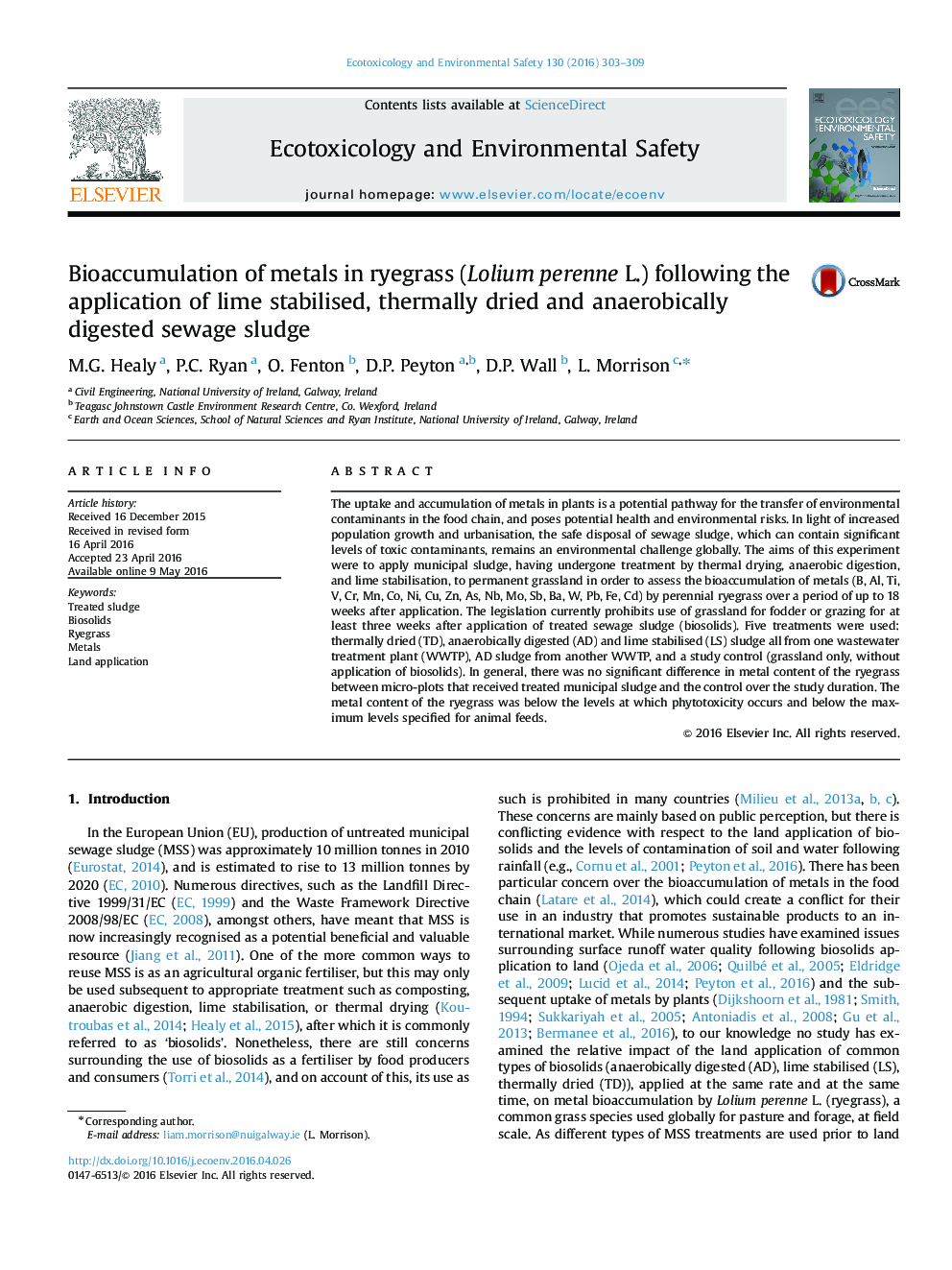| کد مقاله | کد نشریه | سال انتشار | مقاله انگلیسی | نسخه تمام متن |
|---|---|---|---|---|
| 4419189 | 1618933 | 2016 | 7 صفحه PDF | دانلود رایگان |

• Metal accumulation in ryegrass was measured following one application of biosolids.
• Thermally dried, lime stabilised and anaerobically digested biosolids were examined.
• Generally, there was no significant difference in metal content between treatments.
• Ryegrass metal content reduced over the study duration of 18 weeks.
• The ryegrass metal content was well below the levels at which phytotoxicity occurs.
The uptake and accumulation of metals in plants is a potential pathway for the transfer of environmental contaminants in the food chain, and poses potential health and environmental risks. In light of increased population growth and urbanisation, the safe disposal of sewage sludge, which can contain significant levels of toxic contaminants, remains an environmental challenge globally. The aims of this experiment were to apply municipal sludge, having undergone treatment by thermal drying, anaerobic digestion, and lime stabilisation, to permanent grassland in order to assess the bioaccumulation of metals (B, Al, Ti, V, Cr, Mn, Co, Ni, Cu, Zn, As, Nb, Mo, Sb, Ba, W, Pb, Fe, Cd) by perennial ryegrass over a period of up to 18 weeks after application. The legislation currently prohibits use of grassland for fodder or grazing for at least three weeks after application of treated sewage sludge (biosolids). Five treatments were used: thermally dried (TD), anaerobically digested (AD) and lime stabilised (LS) sludge all from one wastewater treatment plant (WWTP), AD sludge from another WWTP, and a study control (grassland only, without application of biosolids). In general, there was no significant difference in metal content of the ryegrass between micro-plots that received treated municipal sludge and the control over the study duration. The metal content of the ryegrass was below the levels at which phytotoxicity occurs and below the maximum levels specified for animal feeds.
Figure optionsDownload as PowerPoint slide
Journal: Ecotoxicology and Environmental Safety - Volume 130, August 2016, Pages 303–309